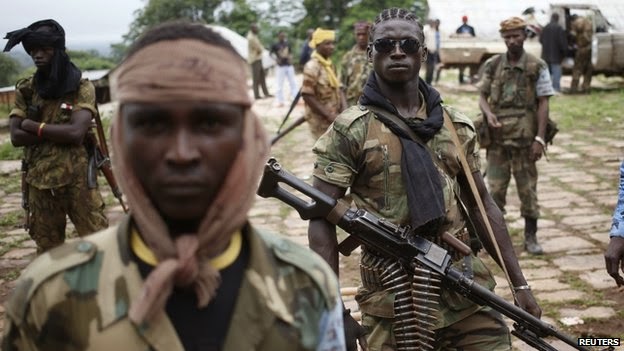Even as the actual territory controlled by the pro-Russian puppet states of the People’s Republic of Donetsk and the People’s Republic of Lugansk in eastern Ukraine shrinks under pressure from the advancing national Ukrainian military, the fictive super-state of which these rebel provinces are a part is sounding cocky and thinking of expanding.
 |
| Pro-Kremlin separatists call the light-blue-colored oblasts in this map a federated Novorossiya. Transcarpathia (Zakarpattia) is at the far west. |
 |
| Pyotr Getsko (left), “Chairman of Government Minister” (sic) of the Podkarpatskaya Rus’ “republic,” with Vladimir Rogov, chairman of the foreign-affairs committee in the Novorossiya “parliament.” At left is the current Transcarpathia oblast flag, also used by separatists and nationalists, while the flag on the right is that of the Donetsk People’s Republic, though the center blue stripe is so washed out that I first mistook it for the black, white, and red tricolor of the former German Reich (and, briefly, the Third one). Thanks to a reader who pointed this out to me on the “Flags of the World (FOTW)” Facebook group. |
 |
| How today’s Ukraine was divvied up before the First World War. |
 |
| A Transcarpathian flag (current oblast flag) at this year’s Novorossiya summit in Yalta. |
 |
| Are Transcarpathian Ruthenians ready for their ethnic revitalization? Or does Moscow just wish they were? |
 |
| The far-right group Jobbik is the second-largest political party in Hungary. |
Could Putin or the Russian-speaking thugs in Ukraine make an actual grab for Transcarpathia? Not likely. They weren’t even able to turn independence declarations into “facts on the ground” in two other oblasts—Kharkiv and Odessa—where the demographics tilt toward Russians. (The so-called Odessa Republic of Novorossiya declared with little effect in late April granted diplomatic recognition not only to the Kharkov, Lugansk, and Donetsk people’s republics but, a little mysteriously, to what its “foreign ministry” called the Carpathian Ruthenian People’s Republic—as reported at the time in this blog.) Those areas are firmly under Kyiv’s administration. But many observers feel that Putin may not really want to annex any other chunks of Ukraine, that he would be happy to destabilize it and weaken its central government through agitation for federalism. And an invasion and annexation of Transcarpathia is not entirely impossible either. After all, a mere year ago anyone who predicting a Russian invasion of Crimea, Donetsk, and Luhansk would have been laughed out of the room. Ukraine’s war with Russia has not yet been won. Not by a long shot.
 |
| The scene in Donetsk. Could conflict spread to Transcarpathia as well? |
[You can read more about these and many other separatist and new-nation movements, both famous and obscure, in my new book, a sort of encyclopedic atlas just published by Litwin Books under the title Let’s Split! A Complete Guide to Separatist Movements and Aspirant Nations, from Abkhazia to Zanzibar. The book, which contains 46 maps and 554 flags (or, more accurately, 554 flag images), is available for order now on Amazon. Meanwhile, please “like” the book (even if you haven’t read it yet) on Facebook and see this interview for more information on the book.]




































